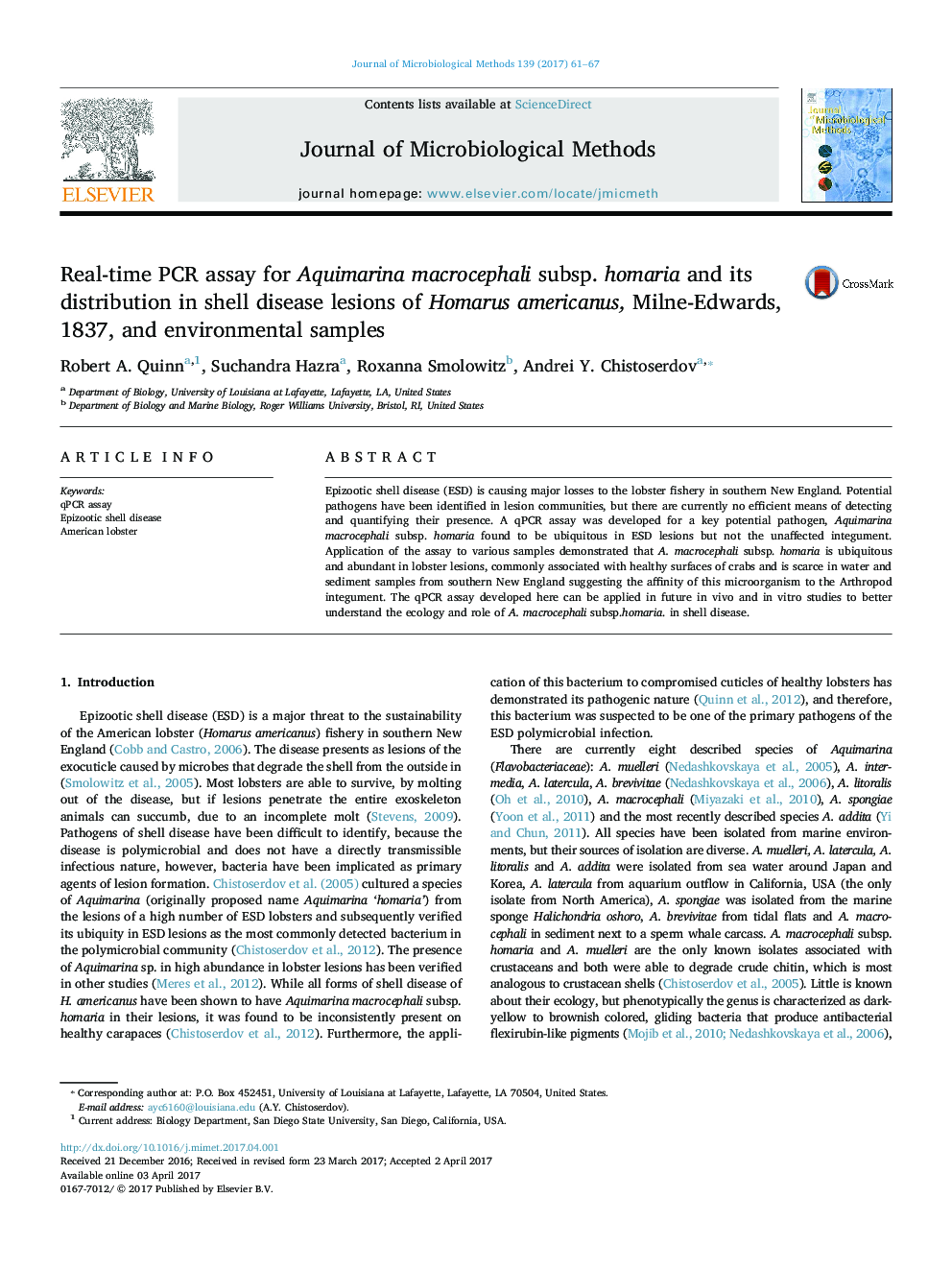| Article ID | Journal | Published Year | Pages | File Type |
|---|---|---|---|---|
| 5522277 | Journal of Microbiological Methods | 2017 | 7 Pages |
â¢A qPCR assay was developed for a shell disease pathogen, Aquimarina macrocephali subsp. homaria.â¢A. macrocephali subsp. homaria is ubiquitous and abundant in lobster lesions.â¢A. macrocephali subsp. homaria is not common on integument unaffected by shell disease.â¢A. macrocephali subsp. homaria is rarely found in water column and sediments samples.
Epizootic shell disease (ESD) is causing major losses to the lobster fishery in southern New England. Potential pathogens have been identified in lesion communities, but there are currently no efficient means of detecting and quantifying their presence. A qPCR assay was developed for a key potential pathogen, Aquimarina macrocephali subsp. homaria found to be ubiquitous in ESD lesions but not the unaffected integument. Application of the assay to various samples demonstrated that A. macrocephali subsp. homaria is ubiquitous and abundant in lobster lesions, commonly associated with healthy surfaces of crabs and is scarce in water and sediment samples from southern New England suggesting the affinity of this microorganism to the Arthropod integument. The qPCR assay developed here can be applied in future in vivo and in vitro studies to better understand the ecology and role of A. macrocephali subsp.homaria. in shell disease.
